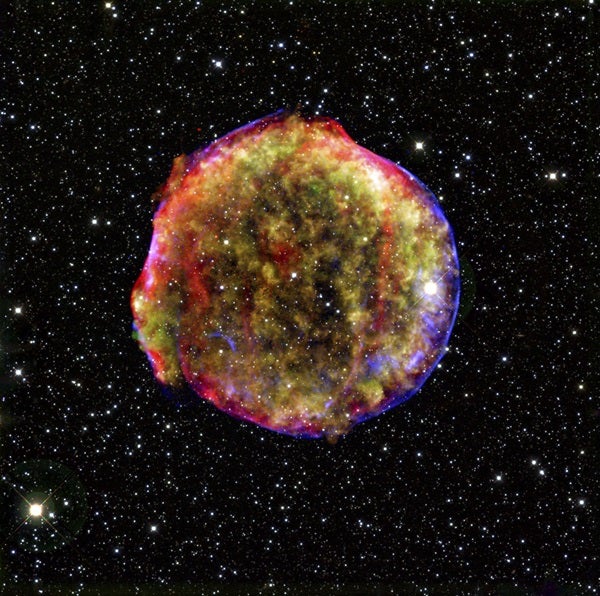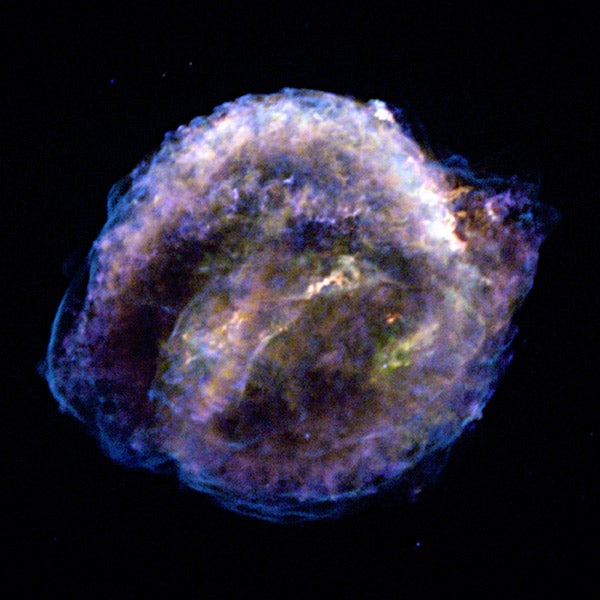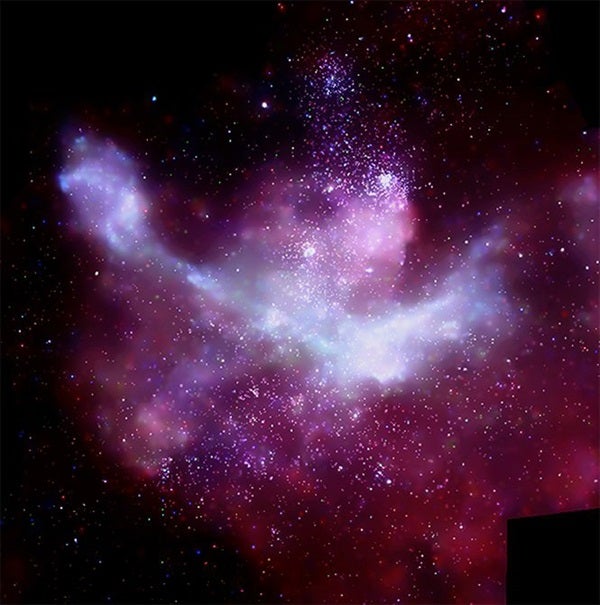Transcript
A supernova is an incredibly energetic stellar explosion. The name arises from the brightness of these blasts, which makes it look like a “new” star has appeared in the heavens. After astronomer Tycho Brahe’s 1573 work De stella nova, meaning “concerning the new star,” the name nova stuck around for such objects (even though he actually described not a nova but a supernova, now called SN 1572). In the 20th century, scientists realized there were two types of stellar explosions, and quirky astrophysicist Fritz Zwicky coined the term supernova to refer to the bigger and brighter explosions.
So what causes these stars to go boom? That depends on the kind of supernova. Astronomers classify the main two kinds as type Ia and type II. Going in reverse order, type II supernovae occur at the end of a massive star’s life cycle. If a star begins life with around eight to 12 times the mass of our Sun, it can collapse in on itself after eventually running out of fuel because it can no longer support its size. This releases a tremendous amount of energy and sends its outer layers flying in all directions, leaving behind a supernova remnant.
The other main category, type Ia, is a bit more complicated. When one member of a binary system reaches “old age” first and becomes a white dwarf, it can strip away material from the other star in a process called accretion. If the white dwarf gathers enough new stuff, it’ll approach the Chandrasekhar limit, about 1.4 times the mass of our Sun. This is the largest possible mass a stable white dwarf can have, and if it goes over the limit, it collapses on itself and forms a type Ia supernova. Another theory suggests that type Ia’s result from a merger between two white dwarfs, creating a single white dwarf exceeding the Chandrasekhar limit.
Like I said, these are just the main types. Astronomers also know of type Ib and Ic supernovae, which likely start with collapsing massive stars, and subdivisions of type II into IIP, IIL, IIn, and IIb, which vary in subtle ways. In fact, in June 2011, astronomers announced they’d found a new kind of supernova that was brighter, hotter, and bluer than any other known type.
Besides providing some nice celestial pyrotechnics, supernovae are important for lots of scientific reasons. For one thing, the unique conditions they create are the only natural way to forge any element heavier than iron. This means all the gold, silver, and lead you’ve ever seen exist thanks to supernovae. The explosions can also leave behind tiny neutron stars, or even black holes, and their shock waves can disturb interstellar gas enough to help create new stars. Finally, much of what we know about the universe’s age and size are thanks to type Ia supernovae, which always explode the same way. This allows scientists to use them as “standard candles,” measuring how far away they are based on how they appear.
Expand your knowledge at Astronomy.com
Check out the complete Astronomy 101 series
Learn about our stellar neighborhood with the Tour the Solar System series
Read about the latest astronomy news












